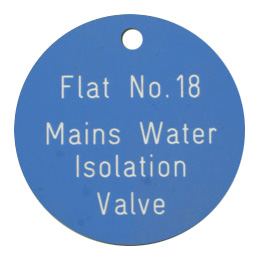More reasons to use Traffolyte signage
One of the greatest things about Traffolyte is its use in labelling. Lettering is well defined and legible with text on a high contrast background. They are often used on electrical installations as the plastic does not conduct with electricity. This was why Metropolitan Vickers invented it for their Trafford Park works in 1927 (hence the first six letters of ‘Trafford’ forming its name).
Here’s why Traffolyte is alright:
- Standard Colours: from the off, Traffolyte was designed with a standard set of colours using the RAL Color scheme. This was 35 years before the formation of Pantone.
- Hardwearing materials: since its invention in 1927, the standard material wasn’t only chosen for its durability. It is melt proof at high temperatures, which is why it is often used in electrical installations.
- Coloured top and bottom layers: this allows for easy engraving and crystal clear text, line art, and diagrams. Two sheets the same colour form a sandwich with a third sheet, in a different colour, squeezed in the middle. The top and bottom sheets are engraved, die cutting the text, line art, plan or diagram.
- Fadeproof: vinyl and ink can fade over time. Traffolyte is fade proof and retains its colours for several years after engraving and installation.
- Flexibility: Traffolyte can be cut into a variety of shapes and sizes. From the smallest of dog tags to the largest of floor plans, it is an attractive option.
Typical Uses
- Dog Tags: sometimes as a cheaper alternative to brass and chrome;
- Fire Escape Plans: this is a popular material for detailing floor plans, for the benefit of firefighters and security staff;
- Labelling Electrical Equipment: its most common and original use of the material;
- Key Fobs: again, as with dog tags, a cheaper alternative to brass and chrome. Also offers more flexibility for non-standard shapes.
Able Engraving and Design, 20 March 2017.

